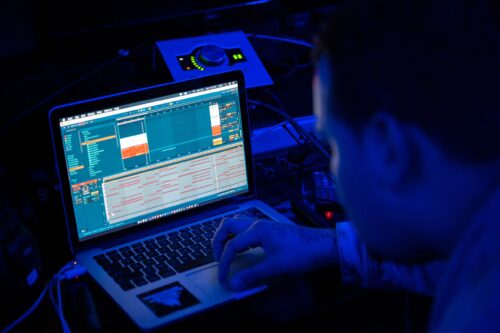Make the right decisions on Ethernet I/O systems
Information is power. The ability to gather time-critical data, digest it, and react upon it is the only way manufacturing companies have to stay in touch with customers’ needs and demands. Without it, companies implode. Today, ERP (Enterprise Resource Planning) systems exist in most all companies.
Reliable I/O systems that use an individual analog-to-digital (A/D) converter and microprocessor ( P) for each I/O channel can avoid a single points of failure. A traditional I/O multiplexer with one A/D and one P is more vulnerable.
Information is power. The ability to gather time-critical data, digest it, and react upon it is the only way manufacturing companies have to stay in touch with customers’ needs and demands. Without it, companies implode.
今天,ERP(企业资源规划)系统exist in most all companies. Whether packaged or custom, their purpose remains the same: to compile data for examination and decision-making. Initially these were for “front office” reports, but today they include counts of the last widgets or batch that came out of production just 15 minutes ago. This data typically comes from an MES (manufacturing execution system) package, where it was compiled through a SCADA system via a PLC or remote I/O device.
The lower half of the communication tree is where the difficulty lies, down on the plant floor. Data needs to get from the bottom of the organization to the top, efficiently. While Ethernet ties these upper level systems together, many distributed I/O communication networks in the plant use proprietary protocols. However, with Ethernet-enabled I/O, many of these difficult layers can be circumvented by tying directly to upper level systems via FTP, HTML, and even OPC over Ethernet. It allows various protocols to co-exist at the same time. For example, TCP, IP, UDP, SNMP, Modbus/TCP, HTML, SMTP and OPC can all operate in parallel, often in concert.
This multi-level communication is now possible because Ethernet has gained admission onto the plant floor, with unshielded twisted pair (UTP) and optical fiber used at the physical and data link layers (1 and 2 of the OSI Model). While Ethernet can give end users power, flexibility, and even determinism, don’t presume that because the wires connect, it can easily communicate with everything else.
Ethernet provides a framework of rules for the physical connections, including “who can talk when.” Layer 7 of the OSI model, the application layer, is where the protocol is defined.
An I/O system and host system that operate over Ethernet may never be able to communicate with one another, because the protocol chosen by the Ethernet I/O vendor determines compatibility with other “off the shelf” or vendor-supplied software. Modbus/TCP, EtherNet/IP, and HSE are among popular protocols. Most HMI vendors and control system vendors support one or more of these. Ethernet-enabled I/O can ease communications by tying to upper level systems, but proprietary Ethernet protocol incompatibilities can cost time and money.
Installing Ethernet I/O in clean, cool, and non-hostile environments presents few obstacles. Even so, great lengths still must be taken to protect and isolate UTP and fiber backbones from noise, heat, and vibration. Many I/O systems are installed in harsh conditions in locations with field-mounted instrumentation, where high and low temperatures and radio frequency interference/electromagnetic interference (RFI/EMI) may exist. Systems and accessories need to match application needs.
As control capability gets pushed further into the field, remote I/O should accommodate control and math capabilities that may be needed. Some remote I/O vendors are implementing full control capability with an RTOS (real-time operating system), RTC (real-time clock) and RTCE (real-time control engine) within their platforms. Math capabilities also allow many Ethernet remote I/O systems to handle tasks previously assigned to a more expensive PLC, such as flow computer, remote terminal unit (RTU), and a high/low selector function.
点对点独立的I / O年代之间的沟通ystems is also a growing trend, since Ethernet and fiber backbones now provide cost-effective migration of signals from one side of the plant to the other. A channel-mapping system inherent to the I/O system can be very useful when spare twisted pairs are unavailable. Instead of adding twisted pair runs from new sensors to an older DCS, a peer-to-peer, high-density input “brick” can be installed in the field. An output brick put in the control room can then translate and communicate 4-20 mA signals between the control system and Ethernet network. Multiple I/O bricks can be added to meet higher device counts, so a legacy system can be upgraded easily, without added cables.
Author Information
Vincent J. Marchant is Western regional manager, Moore Industries-International Inc.,
‘Must have’ specs
When buying Ethernet I/O, look for these attributes:
Ability to withstand high and low ambient temperature conditions of -40 to +85 °C (-40 to +185 °F);
Channel-to- channel, case-to-channel, and channel-to-communication backplane signal isolation;
Dedicated A/D converter and microprocessors for each I/O channel to avoid I/O channel-block failures in systems that use one A/D converter and microprocessor for multiple channels;
High input resolution to add accuracy for precision measurements of (> 18 bit A/D and D/A resolution);
RFI/EMI protection to >20V/m to avoid measurement errors caused by stray electrical noise.
Do you have experience and expertise with the topics mentioned in this content? You should consider contributing to our CFE Media editorial team and getting the recognition you and your company deserve. Clickhereto start this process.





